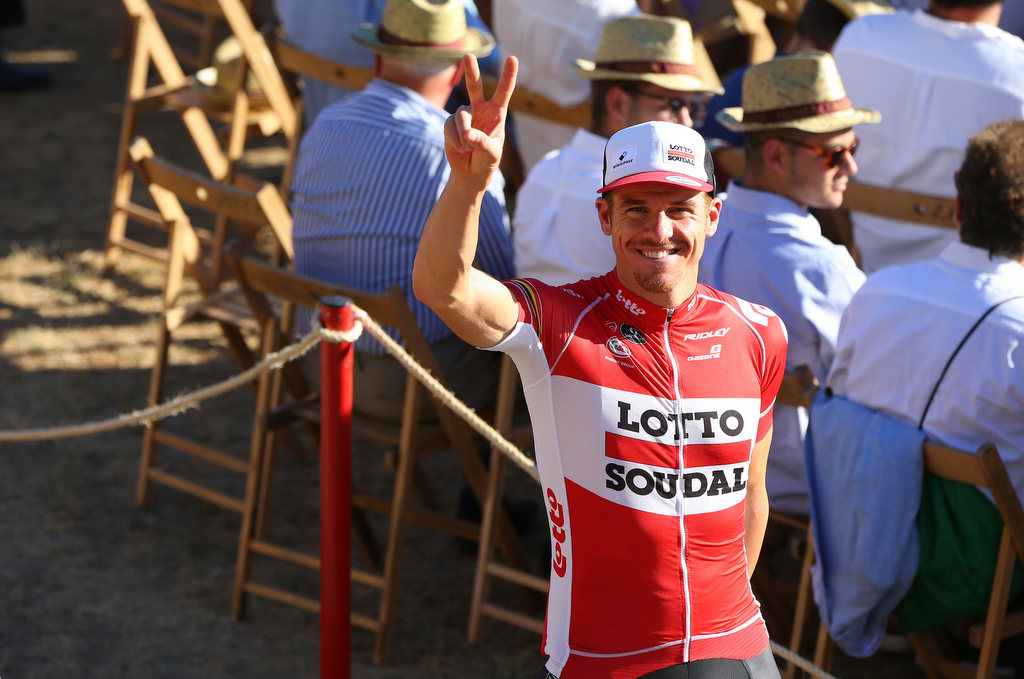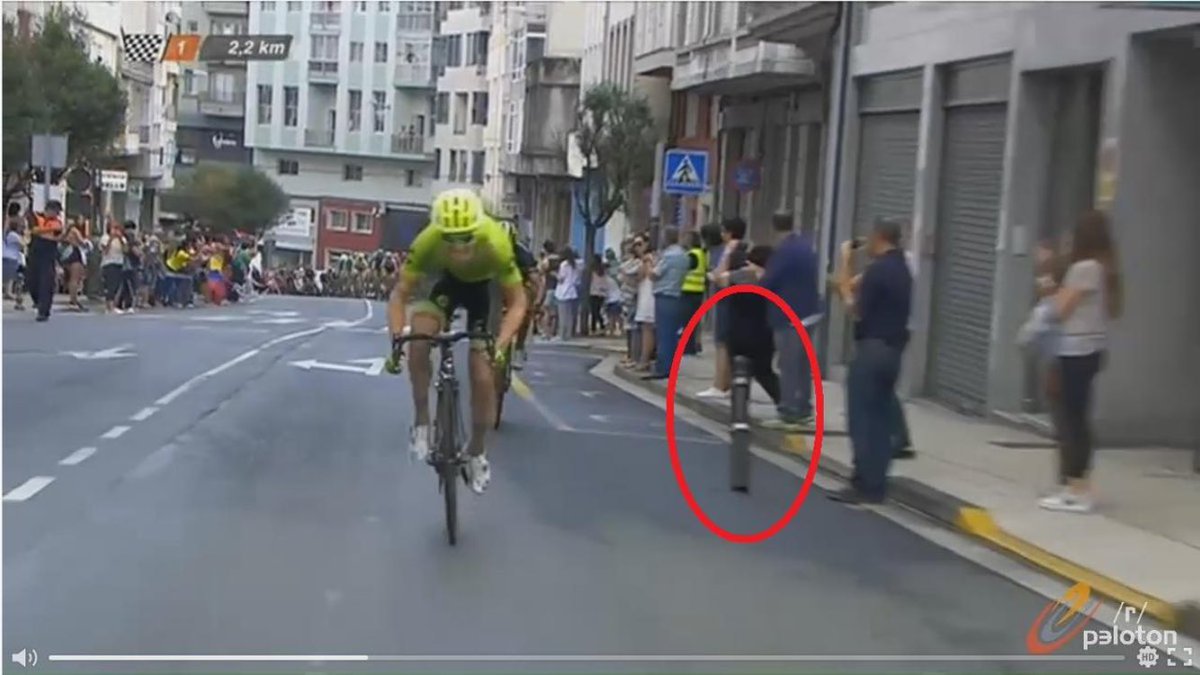CPA calls for finish barriers to be extended to three kilometres
'If organisers can't afford rider safety, they shouldn't be organising races', says Hansen


The Professional Riders Association (CPA) has called on the UCI to introduce a new regulation that will ensure crash barriers are in place for all road races in their final three kilometres.
The CPA's request has emerged during the aftermath of Stephen Kruijswijk's and crash and abandon from the Vuelta a España on stage 5 when the LottoNL-Jumbo rider collided with an unmarked bollard, with Sebastian Minard (AG2R La Mondiale) and Robert Kiserlovski (Tinkoff) also quitting from injuries from crashes late in the same day.
CPA council member and Australian riders' representative Adam Hansen (Lotto-Soudal), who is racing the Vuelta a España, told Cyclingnews at the start of stage 6, "If the organisers can't afford so many barriers, that means they can't afford to look after rider safety, and they shouldn't be organising a race."
According to Hansen, introducing more barriers could reduce the chance of events like Kruiswijk's crash, which resulted in a broken collarbone. Furthermore, he believes the infamous 2016 Tour de France incident on the Mont Ventoux - where Chris Froome (Team Sky), Richie Porte (BMC Racing) and Bauke Mollema (Trek-Segafredo) were involved in a pile up that ended with Froome bikeless and running up the slopes - could be avoided in the future, too.
"It [the bollard that caused Kruiswijk's crash] was not pointed out and everything should be. [But] the CPA is trying to enforce a new security regulation, which we're trying to get past the UCI."
"It's a bit like on the Ventoux, they had barriers there in the final 300 metres, so what the CPA is trying to do is change the UCI rules so the barriers are for the last three kilometres because that's where it gets messy."
"If you look at the Ventoux stage, they [originally] had barriers down to the last six or seven kilometres, so they were very much doing the right thing. But then they had to change the course at the last minute because of the high wind, and they followed the UCI rules." The rules only specify barriers for the final 300m.
Get The Leadout Newsletter
The latest race content, interviews, features, reviews and expert buying guides, direct to your inbox!
"On that occasion, the race organisers were under pressure and they followed the UCI's rules to the letter. But for the CPA; if you can make that [distance for barries] three kilometres, in that way, the incident on the Ventoux might not have happened.
"As for yesterday [stage 4 of the Vuelta], the organisers followed the rules." (As Cyclingnews can testify, having reconnoitred the route, the barriers on stage 5 were in place at least up until the last 1,200 metres to the finish.) Had the barriers been in place up until three kilometres, Hansen argues the accident would not have taken place.
The Vuelta organisers have admitted their responsibility for the obstacle not being indicated and have publicly apologized as well as opening an investigation into why the bollard was not marked, as had been planned. They have also contacted the teams involved to apologize for the incident, both after the stage and again with LottoNL-Jumbo before stage 6.
Hansen says that if race organisers of minor races argue they wouldn't have the money to pay for so many barriers, "that just goes back to the rider safety point of view. If you can't protect the riders then you shouldn't have a bike race."
Following the Vuelta crashes, Hansen hopes that "we can get more riders behind us and be more aware of the situation and more informed, and if we can be more pro-active for the riders, hopefully we'll make it changes. It's in their interest."
Meanwhile, looking ahead stage 12 of the Vuelta a Espana into Bilbao finishes on the same avenue, Gran Via, where the mass pile-up in the Vuelta al País Vasco in stage one of the race last year, also caused by a bollard, took place.
The last time the Vuelta a Espana visited Bilbao in a stage in 2011, the offending bollard was taken out before the race reached the Basque city - but not, with disastrous consequences for Peter Stetina and Sergio Pardilla - in the Vuelta al País Vasco of 2015.
Alasdair Fotheringham has been reporting on cycling since 1991. He has covered every Tour de France since 1992 bar one, as well as numerous other bike races of all shapes and sizes, ranging from the Olympic Games in 2008 to the now sadly defunct Subida a Urkiola hill climb in Spain. As well as working for Cyclingnews, he has also written for The Independent, The Guardian, ProCycling, The Express and Reuters.
